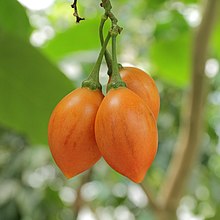집다
Zibda집다 | |
|---|---|
| 아랍어 표기법 | |
| • 아랍어 | زبده |
팔레스타인 내 지브다의 위치 | |
| 좌표:32°27′00″N 35°07′45″E/32.45000°N 35.12917°E좌표: 32°27′00″N 35°07′45″E / 32.45000°N 35.12917°E/ | |
| 팔레스타인 격자망 | 162/206 |
| 주 | 팔레스타인 주 |
| 주 | 제닌 |
| 정부 | |
| • 유형 | 마을 협의회 |
| 이름 의미 | 제브다, 제브다, 개인 이름[1] |
지브다(아랍어: زبده)는 예닌 총독부에 있는 팔레스타인 마을이다.
역사
로마 시대 초·후기(20% + 25%),[2] 비잔틴 시대(25%),[2][3] 이슬람 초기(10%), 중세(15%)의 토기 셰어가 이곳에서 발견됐다.[2]
Zibda는 아마도 1200년에 Crusader 소스에서 Zebedellum이라고 불리는 곳이다.[2]
오스만 시대
지브다는 팔레스타인의 나머지 지역과 마찬가지로 1517년 오스만 제국에 편입되었고, 1596년 인구조사에서 라준 리와에 있는 사라의 나히야에 위치한 자브다로 마을이 나타났다.인구는 26가구였으며, 모두 이슬람교도였다.그들은 밀, 보리, 여름 작물, 염소, 벌통을 포함한 농산물에 대해 25%의 고정 세율을, 올리브 오일이나 포도 시럽에 대한 세금 외에 추가로 지불했다. 총 6,500 에이커의 세금이다.[4]오스만 초기(5%)의 토기 유적도 이곳에서 발견됐다.[2]
1838년 제브다는 하리테 에쉬 셰말리예 지방이라고도 불리는 예닌 지방의 한 마을로 주목받았다.[5]
1882년 PEF의 서팔레스타인 조사(SWP)는 제바를 "우물이 있는 폐허가 된 마을"[6]이라고 묘사했다.
영국 위임 통치 시대
영국 위임통치국이 실시한 1922년 팔레스타인의 인구조사에서 자브다는 150명의 무슬림이 있었으며,[7] 1931년 인구조사에서 총 22채의 무슬림 132명으로 줄었다.[8]
1945년 통계에서 지브다의 인구는 190명의 이슬람교도였으며,[9] 총 1만1924개의 부지가 있는 것으로 공식 토지 및 인구 조사에 따르면 나타났다.[10]이 중 경작지와 관개용지에 1136개의 두남이 사용되었고, 곡물용 두남은 1,022개였으며,[11] 총 6,591개의 두남은 경작불능지로 분류되었다.[12]
요르단 시대
1948년 아랍-이스라엘 전쟁과 이후 1949년 정전협정에 이어 지브다는 요르단 통치하에 들어갔다.
1961년의 요르단 인구 조사는 225명의 거주자를 발견했다.[13]
이스라엘의 점령
1967년 6일 전쟁 이후, 지브다는 이스라엘에 의해 점령되었다.
참조
- ^ 파머, 1881년 페이지 156
- ^ a b c d e 제르탈, 2016, 페이지 288-289
- ^ 다우핀, 1998, 페이지 751
- ^ 헉테롯과 압둘파타타, 1977, 페이지 159
- ^ 로빈슨과 스미스, 1841년, 제3권, 부록 2 페이지 131
- ^ 콘더와 키치너, 1882년, SWP II, 페이지 72
- ^ 1923년 바론, 제닌 소구역 표 V, 페이지 30
- ^ 밀스, 1932, 페이지 72
- ^ 팔레스타인의 정부, 통계부, 1945년, 페이지 17
- ^ 팔레스타인의 정부, 통계부.1945년 4월, 마을 통계.1970년, 하다위에서 인용, 페이지 55
- ^ 팔레스타인의 정부, 통계부.1945년 4월, 마을 통계.1970년 하다위에서 인용, 페이지 100
- ^ 팔레스타인의 정부, 통계부.1945년 4월, 마을 통계.1970년, 하다위에서 인용, 페이지 150
- ^ 요르단의 정부, 통계부, 1964년, 페이지 25
- ^ Frantzman and Bar, 2013, 페이지 102
참고 문헌 목록
- Barron, J.B., ed. (1923). Palestine: Report and General Abstracts of the Census of 1922. Government of Palestine.
- Conder, C.R.; Kitchener, H.H. (1882). The Survey of Western Palestine: Memoirs of the Topography, Orography, Hydrography, and Archaeology. Vol. 2. London: Committee of the Palestine Exploration Fund.
- Dauphin, Claudine (1998). La Palestine byzantine, Peuplement et Populations. BAR International Series 726 (in French). Vol. III : Catalogue. Oxford: Archeopress. ISBN 0-860549-05-4.
- Frantzman, Seth J. and Doron Bar (2013). "Mapping Muslim Sacred Tombs in Palestine During the Mandate Period". Levant. 45 (1): 96–111. doi:10.1179/0075891412Z.00000000011. S2CID 162185684.
Zibda, Umm Safa and Sinjil in the northern central highlands had two [tombs] each.
- Government of Jordan, Department of Statistics (1964). First Census of Population and Housing. Volume I: Final Tables; General Characteristics of the Population (PDF).
- Government of Palestine, Department of Statistics (1945). Village Statistics, April, 1945.
- Hadawi, S. (1970). Village Statistics of 1945: A Classification of Land and Area ownership in Palestine. Palestine Liberation Organization Research Center.
- Hütteroth, Wolf-Dieter; Abdulfattah, Kamal (1977). Historical Geography of Palestine, Transjordan and Southern Syria in the Late 16th Century. Erlanger Geographische Arbeiten, Sonderband 5. Erlangen, Germany: Vorstand der Fränkischen Geographischen Gesellschaft. ISBN 3-920405-41-2.
- Mills, E., ed. (1932). Census of Palestine 1931. Population of Villages, Towns and Administrative Areas. Jerusalem: Government of Palestine.
- Palmer, E.H. (1881). The Survey of Western Palestine: Arabic and English Name Lists Collected During the Survey by Lieutenants Conder and Kitchener, R. E. Transliterated and Explained by E.H. Palmer. Committee of the Palestine Exploration Fund.
- Robinson, E.; Smith, E. (1841). Biblical Researches in Palestine, Mount Sinai and Arabia Petraea: A Journal of Travels in the year 1838. Vol. 3. Boston: Crocker & Brewster.
- Zertal, A. (2016). The Manasseh Hill Country Survey. Vol. 3. Boston: BRILL. ISBN 978-9004312302. (또한 Tell esh-Sheikh ṣabar, 페이지 285 ff 및 페이지 78 참조)



